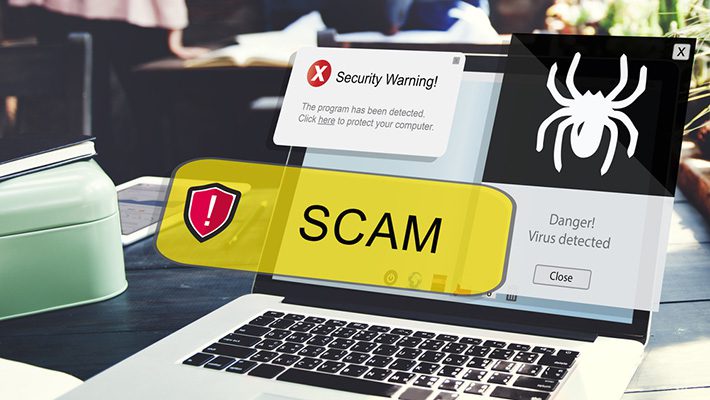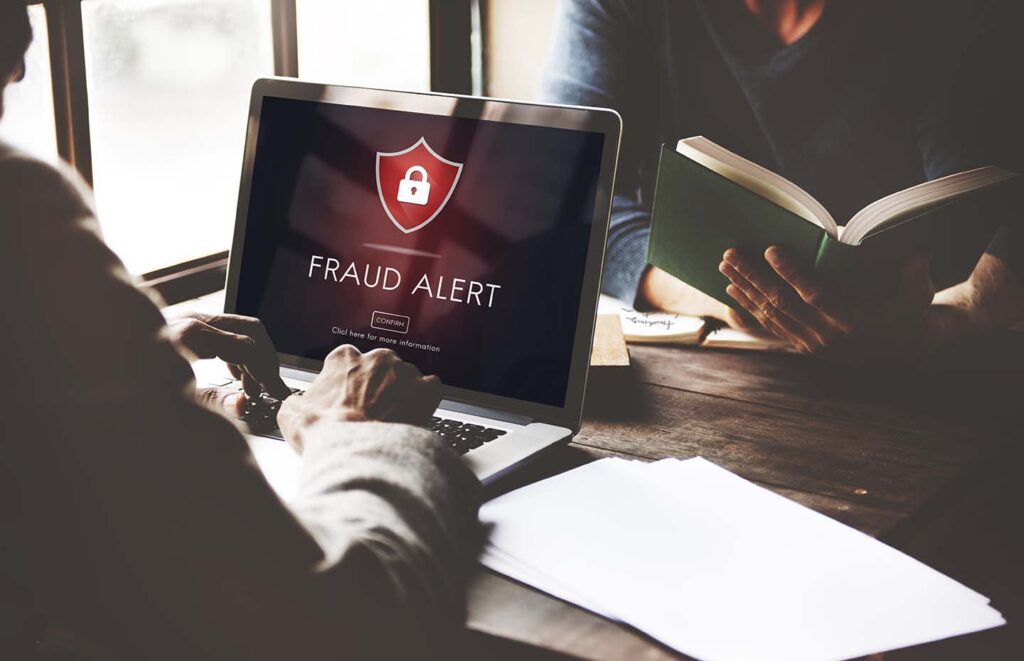Let’s be honest: the internet is a remarkable place. It connects us, entertains us, and offers a seemingly endless array of products and services right at our fingertips. But with all that convenience comes a lurking danger: scam websites. These deceptive online presences are designed to trick you, steal your money, or compromise your personal information. Nobody wants to fall victim to a clever online con, and the good news is, with a little know-how, you can become a pro at spotting these digital traps.
Think of this article as your personal guide to navigating the web safely. We’ll dive into the tell-tale signs that scream “SCAM!” So you can confidently browse, shop, and engage online.
The Basics: What Makes a Website Suspicious?
Before we dive into the nitty-gritty, it’s helpful to understand the core objective of a scam website. They aim to mimic legitimate sites to gain your trust, often for financial gain or data harvesting. They might pretend to be an online store, a bank, a government agency, or even a charity. The key is to look for inconsistencies and anomalies that a reputable site wouldn’t have.
Red Flag #1: Suspicious URLs and Domain Names
This is often your first line of defense. A quick glance at the website’s address bar can tell you a lot.
Typos and Misspellings
Scammers often create URLs that are almost identical to legitimate ones, but with subtle typos. For example, instead of “amazon.com,” you might see “amaz0n.com” (with a zero instead of an ‘o’) or “amazonn.com.” Always double-check the spelling.
Unusual Domain Extensions
While .com, .org, and .net are common, be wary of unusual or obscure domain extensions, especially for commercial sites you’ve never heard of. While not all are malicious, they warrant extra scrutiny.
Lack of HTTPS
Always check for “https://” at the start of the URL and a padlock icon in your browser’s address bar. The “s” signifies “secure,” meaning the connection to the website is encrypted. If you only see “http://”, your information isn’t secure, making it a huge red flag, especially for sites where you’re entering personal or payment details.
Source image picked from [Pexel]


Red Flag #2: Poor Website Design and Content
Legitimate businesses invest in professional website design and well-written content. Scam sites often cut corners.
Shoddy Design and Layout
Does the website look unprofessional, with a cluttered layout, inconsistent fonts, or low-resolution images? These are often signs of a hastily put-together scam site. Legitimate businesses prioritize a clean, user-friendly experience.
Grammatical Errors and Typos
While a single typo might be an oversight, a website riddled with grammatical errors, misspellings, and awkward phrasing is a major warning sign. This suggests a lack of professionalism and often indicates the site was created by non-native speakers or with minimal attention to detail.
Generic or Stolen Content
Scammers often lift content directly from legitimate websites or use generic filler text. If product descriptions sound vague or overly enthusiastic without specific details, or if sections of the site feel like they were copied and pasted, proceed with caution.
Red Flag #3: Too-Good-To-Be-True Deals and Offers
This is a classic scam tactic. If something seems unbelievably cheap, it probably is.
Unrealistic Discounts
A brand new iPhone for 90% off? A luxury car for a fraction of its market value? These are almost always scams designed to lure you in. Reputable retailers might offer discounts, but they’ll be within a reasonable range.
High-Pressure Sales Tactics
Scam sites often employ tactics like “limited time offers” or “only X items left” to create a sense of urgency and prevent you from thinking critically or doing your due diligence.
Pressure Tactics and Urgency
Beyond just enticing deals, scammers often try to rush your decision-making process.
Countdown Timers and Imminent Deadlines
While legitimate sales can have deadlines, be wary of countdown timers that seem to reset or unrealistic “today only” offers that pressure you into immediate action. The goal is to make you panic-buy without proper investigation.
Demands for Immediate Payment
Any website that insists on immediate payment, especially through unconventional methods like wire transfers, gift cards, or cryptocurrency for regular purchases, should raise a huge red flag. Legitimate businesses offer standard, secure payment options.
Lack of Secure Payment Options
How a website asks for payment is crucial.
Unusual Payment Methods
Legitimate online retailers primarily use credit card processors (Visa, MasterCard, American Express), PayPal, or other well-known, secure payment gateways. If a website only accepts wire transfers, cryptocurrency, or gift cards for retail purchases, it’s a strong indicator of a scam. These methods are often irreversible, making it difficult to recover your money if something goes wrong. For more information on safe online payment methods, you can check out resources from consumer protection agencies. For instance, the Federal Trade Commission (FTC) offers excellent advice on recognizing and avoiding online payment scams. You can find valuable information on their website, ftc.gov.
No Payment Gateway Information
When you go to checkout, you should see clear logos of accepted payment methods and often be redirected to a secure payment gateway page. If the site asks you to directly input credit card details on their own page without any recognizable security indicators, turn back immediately.
For those looking for legitimate deals and safe shopping, platforms like coupons.deepdiveinsight focus on providing verified coupons and offers, which contrasts sharply with the “too good to be true” offers of scam sites. Knowing the difference is essential for safe online shopping.
Red Flag #6: Missing or Dubious Contact Information
A legitimate business wants you to be able to contact them.
No Contact Information
If a website has no “Contact Us” page, no email address, or no phone number, that’s a major red flag. How would you resolve an issue or ask a question?
Generic or Fake Contact Details
Even if contact information is present, it might be fake. You can You can try calling the phone number or sending an email. If the phone number is disconnected or the email bounces, it’s a bad sign. A physical address that turns out to be a residential home or a vacant lot is also highly suspicious.
Lack of Social Media Presence (or very new/empty profiles)
While not every business is heavily active on social media, a complete lack of any presence, or profiles that are very new with little engagement, can be a warning sign, especially for larger businesses.
Red Flag #7: Unsolicited Communications
How did you find this website? If it was through an unsolicited email, pop-up, or suspicious advertisement, be extra vigilant.
Phishing Emails and Texts
Many scam websites are promoted through phishing attempts – emails or text messages that try to trick you into clicking a malicious link. Always verify the sender and the link before clicking. To learn more about identifying phishing attempts, Google’s Safety Center provides comprehensive guides on how to spot and report phishing scams. You can explore their resources on online security at safety.google.
Pop-up Overload
Aggressive and persistent pop-up ads, especially those that are difficult to close, are often associated with less reputable or outright malicious websites.
Tools to Check if a Website is a Scam
Beyond manual inspection, various tools can help you determine a website’s legitimacy. These include browser extensions, dedicated scam checker websites, and security software. Using these can add an extra layer of protection, especially when you’re unsure about a new site.
Best Website Scam Checker Tools
Several reputable online tools can help you verify a website’s safety. Look for services that check domain registration, blacklists, and security certificates. Popular options often include features like URL analysis and user reviews, giving you a quick overview of potential risks.
How to Detect Phishing Websites by URL
Phishing websites often use subtle tricks in their URLs to deceive you. Always look for misspellings, extra words, or unusual subdomains in the address. For example, “amaz0n.com” instead of “amazon.com” is a classic sign. Scrutinizing the URL carefully is your primary defense against these deceptive sites.
Business Registration (for larger entities)
For larger businesses, you can sometimes check public business registries in their stated country of operation. If they claim to be a large corporation but have no official registration, that’s a problem.
For more general insights into various online topics, including safe online practices, you can explore resources like deepdiveinsight. Expanding your knowledge is always a good idea.
Source image picked from [Pexel]



What to Do If You Suspect a Scam
- Don’t proceed with any transactions: If your gut tells you something is off, listen to it.
- Don’t enter personal information: Never give out your Social Security number, banking details, or other sensitive information.
- Close the tab: Often, the safest action is simply to close the browser tab.
- Report the scam: You can report scam websites to organizations like the Federal Trade Commission (FTC) in the U.S. You can also contact the relevant consumer protection agency in your country. Your report can help protect others.
- Inform your bank/credit card company: If you’ve already made a payment, contact your bank or credit card company immediately to report the fraudulent charge.
Frequently Asked Questions
What is the most common red flag of a scam website?
The most common and often immediate red flag is a suspicious URL or domain name. Typos, unusual extensions, and the absence of “https://” are critical indicators that something is wrong.
Can a website with a padlock icon still be a scam?
A padlock means the site uses HTTPS (secure connection), but doesn’t prove it’s legit. Scammers use it too. Watch for red flags like bad design, fake offers, and shady contact info.
What steps should I take if I accidentally click on a suspicious link?
If you clicked a suspicious link but gave no info or downloads, you’re likely safe. Close the tab and run a trusted antivirus/malware scan to check for hidden threats.
How can I double-check if a website is legitimate before buying?
To verify a site’s legitimacy, check independent reviews (e.g., Trustpilot), social media presence, contact customer service, and confirm their address/phone match public records..
Are all websites with “too good to be true” deals scams?
Not all, but most too-good-to-be-true deals are scams. Big discounts on pricey items often signal fraud. Legit sales stay within market range. Be cautious with extreme offers.









